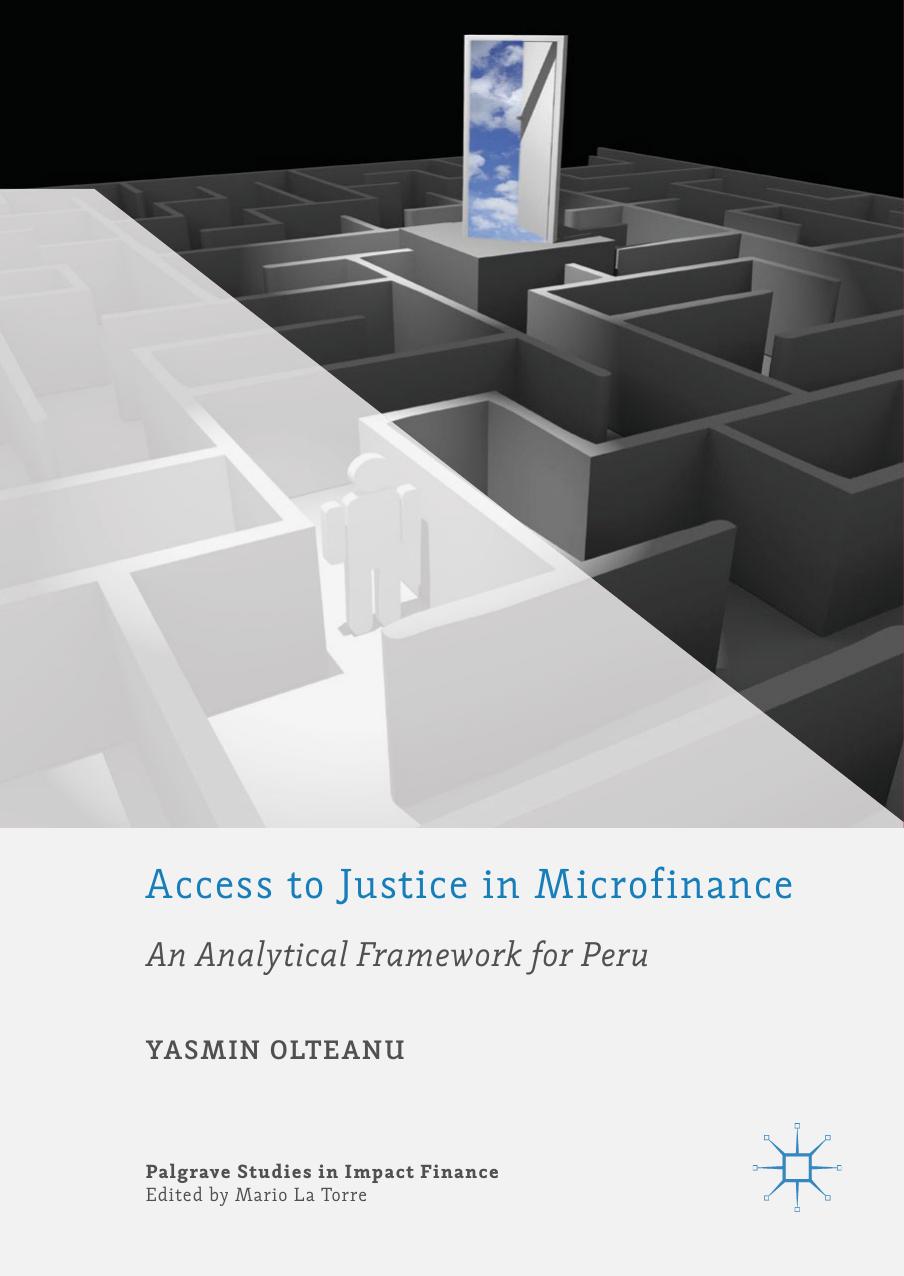Access to Justice in Microfinance by Yasmin Olteanu

Author:Yasmin Olteanu
Language: eng
Format: epub, pdf
ISBN: 9783319953243
Publisher: Springer International Publishing
6.5 Chapter Conclusion
Peru is coined by a vast heterogeneity and is still stamped by the tumultuous political and economic unrest which hit the country for three decades from the 1970s. Today, the political and economic environment is stable and supportive to the microfinance sector, which is well-developed and characterized by six features: It (i) puts a focus on the MFI’s financial sustainability or profits, (ii) targets the economically active versus the poorest, (iii) operates mainly in urban settings, (iv) uses predominantly the individual lending approach, (v) successfully accesses national and international financial markets , and (vi) enjoys a strong regulatory and legal framework. The presence of financial institutions offering financial services to vulnerable target groups including informal business is highly relevant given that an estimated 60% of the workforce is working in the informal sector and an estimated 98% of the Peruvian companies are microenterprises.
There are eight legal set-ups enabling financial institutions and insurance companies to serve vulnerable target groups. All but the NGO MFIs are directly or indirectly supervised by the Peruvian Superintendency of Banking, Insurance and Private Pension Fund Administrators (SBS ). NGO MFIs are organized in the Consortium of Private Organizations supporting the Development of Micro and Small Enterprises (COPEME) and commit to self-regulation. The SBS regularly measures the state of financial inclusion and compares it to other Latin American countries: Peru ranks fifth regarding the uptake of credit products and second regarding the physical outreach to financial consumers . It does, however, have one of the lowest levels of insurance uptake in the region.
Financial consumer protection predominantly aims at increasing transparency and at this way enabling consumers to make informed decisions. In order to inhibit abusive or predatory practices, the SBS , in addition, performs regular checks. Financial consumers are, like consumers of all sectors, protected by the National Institute for the Protection of Competition and for the Protection of Intellectual Property (INDECOPI ), which obliges all commercial entities to establish defined internal complaint mechanisms and also serves as a third-party forum. In addition, there are several other third-party forums provided by the regulator and industry networks. Chapter 8 will discuss these mechanisms in detail and evaluate them with regard to their appropriateness for the vulnerable financial consumer who is at the center of this study.
Download
Access to Justice in Microfinance by Yasmin Olteanu.pdf
This site does not store any files on its server. We only index and link to content provided by other sites. Please contact the content providers to delete copyright contents if any and email us, we'll remove relevant links or contents immediately.
The Black Swan by Nassim Nicholas Taleb(6190)
Bad Blood by John Carreyrou(5768)
Pioneering Portfolio Management by David F. Swensen(5606)
Millionaire: The Philanderer, Gambler, and Duelist Who Invented Modern Finance by Janet Gleeson(3569)
Skin in the Game by Nassim Nicholas Taleb(3460)
The Money Culture by Michael Lewis(3284)
Skin in the Game: Hidden Asymmetries in Daily Life by Nassim Nicholas Taleb(3264)
Bullshit Jobs by David Graeber(3179)
The Wisdom of Finance by Mihir Desai(3078)
Blockchain Basics by Daniel Drescher(2890)
Liar's Poker by Michael Lewis(2811)
The Intelligent Investor by Benjamin Graham Jason Zweig(2596)
Hands-On Machine Learning for Algorithmic Trading by Stefan Jansen(2516)
Mastering Bitcoin: Programming the Open Blockchain by Andreas M. Antonopoulos(2509)
Investing For Dummies by Eric Tyson(2470)
Fooled by Randomness: The Hidden Role of Chance in Life and in the Markets by Nassim Nicholas Taleb(2413)
The Power of Broke by Daymond John(2376)
Zero Hour by Harry S. Dent Jr. & Andrew Pancholi(2246)
Market Wizards by Jack D. Schwager(2163)
